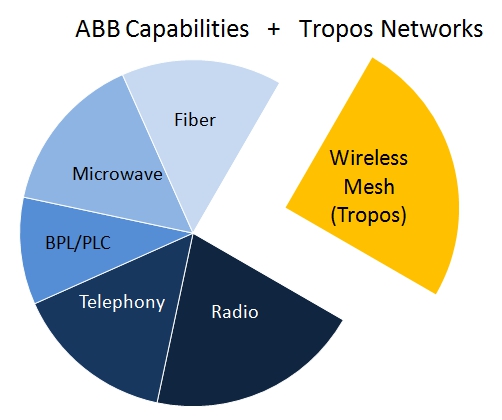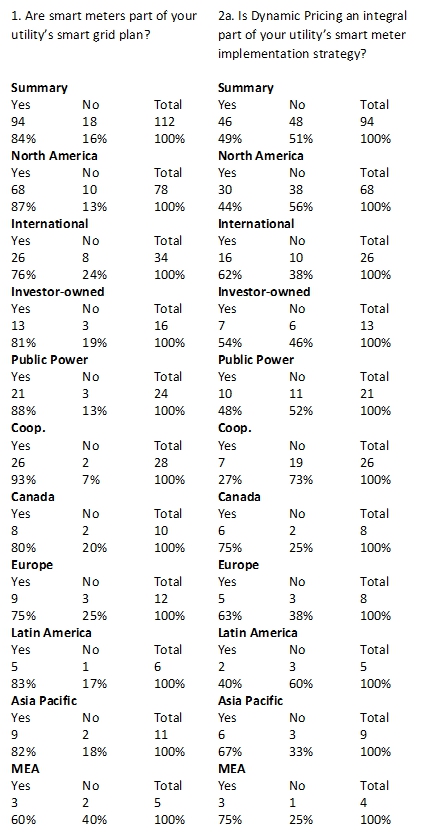Looking Ahead to The Likely Impact on the Electric Power Industry
On May 21, 2012, Eaton Corp. formally concluded an agreement to purchase Cooper Industries PLC in a cash-and-stock deal valued at more than $11 billion. The combined power-related operations will provide a significantly expanded market position in some key growth areas of the worldwide electrical power and distribution industry and positions the combined business entity as a key participant in the evolving “smart grid” marketplace. Together, these firms earned $21.5 billion in 2011 revenue.
The deal, as publicly announced, would create a company (to be known as Eaton Global PLC) that manufactures products and provides a range of power-related services for a wide range of electrical uses, from power grids and lighting to electrical, hydraulic and transmission systems for vehicles, the aerospace industry and the military.
This combined revenue base of $21.5 billion is larger than that of some other major players in the electric power industry (such as Alstom Grid) but is short of global leaders like ABB ($38B), GE ($45 B), Schneider Electric ($29 B) and Siemens ($36B). However, when one takes away the “power generation” revenues of ABB, GE and Siemens, the revenue differences shrink considerably. On the other hand, some units of Eaton Global are themselves only tangentially involved in the electric power industry.
The new company is likely to be called Eaton Global Corp. PLC, planned to be incorporated in Ireland and headed by Eaton Chairman and CEO Alexander Cutler. The deal will first need shareholder approvals at both companies and acceptance by the Irish High Court. The deal is expected to conclude in the fourth quarter (late Autumn) of 2012.
Interesting times indeed! A quick review of Eaton’s Electric Distribution and Control business in North America (and Eaton Electrical internationally) together with a review of the Cooper Power Systems offerings leads us to believe the following:
- Point One: Cooper is a leader in T&D infrastructure and first level smart grid (non-metering), and in several low voltage areas (lighting, small load management) while Eaton is a very strong player in the middle area (commercial and industrial enterprises, some utility-derived revenues and some residential market revenues). In the oil/gas energy field, it would be analogous to stating that Cooper is active in the upstream and downstream aspects of the business, while Eaton is a mainstay in the midstream arena.
- Point Two: The Eaton C-H line of protective relays will benefit with the inclusion of Cooper Power’s Edison line of digital relays.
- Point Three: Together, both companies’ lines of protective relays will move them to a combined revenue position behind SEL, GE and ABB, moving up on Basler, ahead of Beckwith and others.
Here are Newton-Evans’ first impressions of how the competitive landscape will likely be changing with the synergistic effects of this combined corporate entity:
Protective Relays
Effect on Eaton Global: The new company will benefit from combined offerings (complementary)
Effect on the Industry: The combined operations will move the new company into fifth place in North American market shares.
Automation and Control Products
Effect on Eaton Global: Positive effect on new company’s “smart grid” market position and market perception.
Effect on the Industry: Provides solid array of offerings vis-à-vis GE, ABB, Siemens, Schneider.
Circuit Protection
Effect on Eaton Global: The positive and complementary offerings of Eaton Electrical and Cooper Bussman will help the new company grow its position.
Effect on the Industry: Most likely Schneider will see increased competitive thrust around the world.
PQ Monitoring
Effect on Eaton Global: Will be viewed as a true international provider of power quality monitoring, moving up on the global stage in this industry segment.
Effect on the Industry: Likely competitive impact on mid-size firms active in PQ market. (Megger, Dranetz, Power Monitors and several others).
T&D and Power Related Services
Effect on Eaton Global: A truly wide-ranging combined offering from T&D services to industrial, commercial and even residential power-related services.
Effect on the Industry: Will not “steal” shares from others as much as help the total services market (capacity) domestically and internationally. Will still gain competitively vis-a-vis less well rounded offerings of other global services providers.
Cooper Industries
Founded: 1833
Number of Employees: 31,000
Annual Revenue: $5.4 Billion (Cooper Industries), $1.3 Billion (Cooper Power Systems)
o Cooper Power Systems has been meeting electrical distribution needs since 1985, and the companies that make up Cooper have been serving the industry even longer. These companies include: McGraw-Edison, RTE, Kearney, Edison, Combined Technologies, Kyle, Lin Material, McGraw, and Electromanufacturas, SA (Mexico).
o These Cooper Power subsidiary companies helped shape modern electrical distribution systems with advances in overcurrent and overvoltage protection, switchgear, underground distribution, and other product developments.
o Protective Relay Products and Services
Cooper Power Systems manufactures a wide range of medium and high voltage electrical equipment, components and systems for the utility and industrial markets. Used in substations, overhead, underground and in-plant medium voltage distribution systems, the products include:
o Single and three-phase overhead and pad-mounted transformers, substation transformers, power capacitors and controls, voltage regulators and controls, reclosers, pad-mounted switchgear, air-break switches, vacuum switches, sectionalizers, fault interrupters, current-limiting fuses, surge arresters, cable connectors and accessories, transformers components, line construction materials, tools and grounding equipment, faulted circuit indicators, protective relays, SCADA system software, distribution automation equipment, power systems analysis software, and system studies and event measurement services.
In 1998, the company introduced the NOVA solid insulation reclosers and the STAR faulted circuit indicator. In 1999, Cooper introduced the Pathfinder faulted circuit indicator and high firepoint dielectric fluid.
Edison Relays
The Edison line of relays is comprised of 18 compact, draw-out relays which are identical in appearance and operation. Edison relays are designed with ease of use in mind. Offering state of the art performance, all Edison relays feature an easy to use front panel interface that will have you up and running in minutes, rather than hours or days as with most other relays. And since all relays share the same interface, the knowledge you gain from using one relay is transportable to every other relay in the line. All Edison relays feature Modbus communications for easily interfacing to SCADA or automation systems.
DIN Rail Mount Relays
Cooper also offers three very compact, powerful, and economical DIN rail mount relays covering overcurrent and motor applications.
Eaton Corporation Company Overview
Founded: 1911
Sales (2011): $16.1 billion
# of employees: 73,000
Eaton Corporation is a diversified power management company and a global technology leader in electrical components and systems for power quality, distribution and control; hydraulics components, systems and services for industrial and mobile equipment; aerospace fuel, hydraulics and pneumatic systems for commercial and military use; and truck and automotive drivetrain and powertrain systems for performance, fuel economy and safety. Eaton has approximately 75,000 employees and sells products to customers in more than 150 countries. For more information, visit www.eaton.com.
Protective Relay Products and Services
Control and automation equipment include contactors and motor starters, variable speed drives, photoelectric and proximity sensors, PanelMate video control panels, microprocessor-based control and protection devices, as well as pushbuttons and switches, all designed to enhance factory performance.
Power distribution equipment includes a family of circuit breakers, ranging from miniature breakers rated from 120 volts up to world-class vacuum breakers rated up to 38 kilovolts. Other products of this division include integrated facility systems, LV circuit breakers, panel boards, power management, surge protection, switchboards and transfer switches.
The company’s power management protection relays include:
MP3000 Motor Protection Relay – Advanced microprocessor-based motor protection relay that is easy to set up and use. It monitors, controls and protects three-phase induction motors of any size or voltage level against overload, thermal damage to rotor or stator, electrical faults, and excessive starting, and many process equipment failures.
MP4000 Motor Protection Relay- MP-4000 motor protection relay combines all the features required to ensure protection, fault diagnostics, power metering and communication for induction and synchronous motors. The MP-4000 expands upon industry-leading protection, control and diagnostics found in the MP-3000 by adding voltage inputs from Voltage Transformers (VT).
MD3000 Differential Relay- Stand alone self balanced differential protection for critical motors and generators.
DT3000 Feeder Protection Relay – Three phase and ground microprocessor-based overcurrent protection suitable for medium voltage feeder applications, detect and protect against overcurrent faults using ANSI, IEC and thermal curves, with zone interlocking to give you the flexibility to protect your bus without having to add additional CTs.
FP4000 Feeder Protection Relay – Multifunctional microprocessor-based feeder relay with complete current and voltage protection, metering, control and communications in a fixed case package. Multiple setting groups to reduce arc flash energy and zone selective interlocking for bus protection, without having to add additional CTs or relays. Its programming capabilities make it ideal for transfer schemes.
FP5000 Feeder Protection Relay – Multifunctional microprocessor-based feeder relay with complete protection, metering, control and communications in a fixed case or draw-out package. Multiple setting groups to reduce arc flash energy and zone selective interlocking for bus protection, without having to add additional CTs or relays. Its programming capabilities make it ideal for transfer schemes.



 summary reviews and highlights from completed studies
summary reviews and highlights from completed studies
